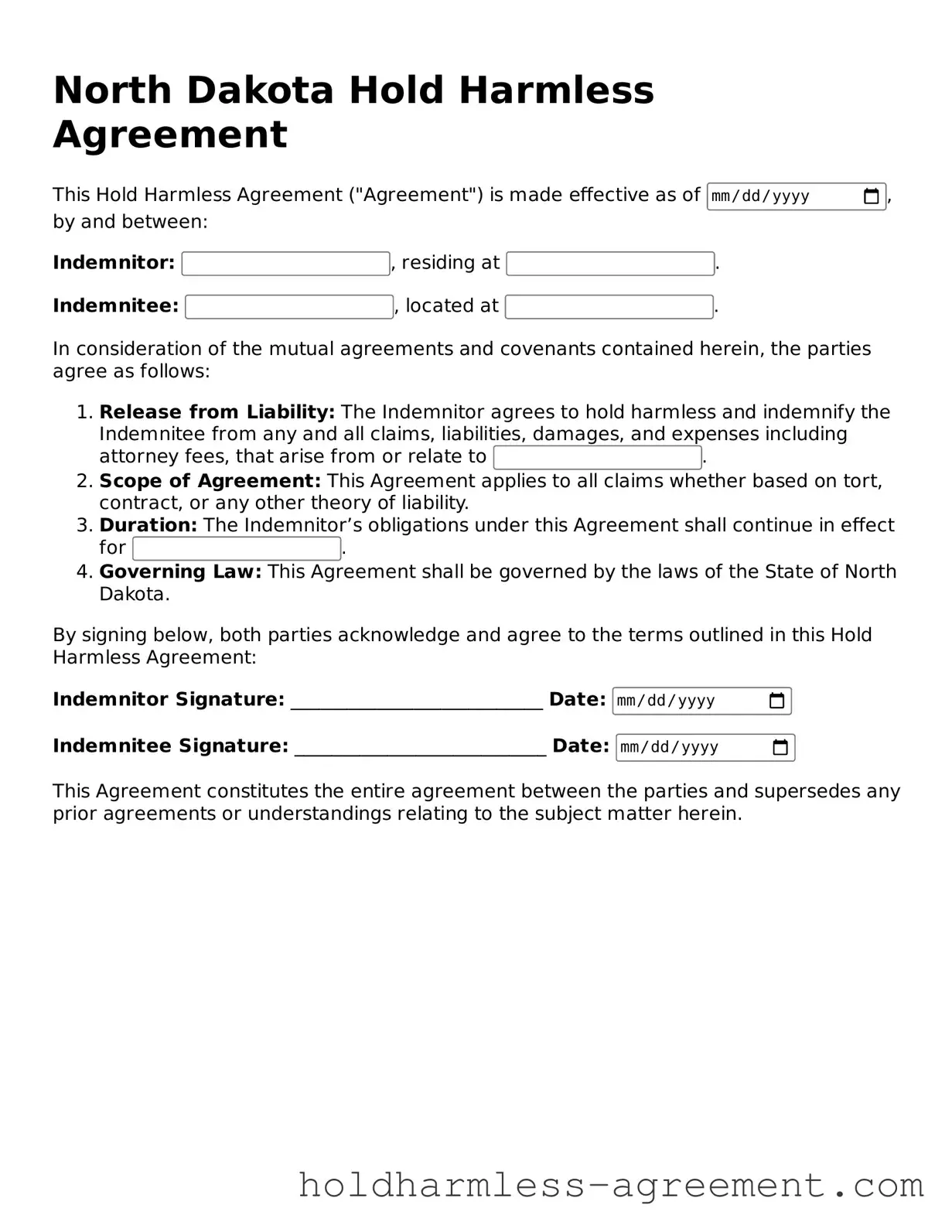What is a North Dakota Hold Harmless Agreement?
A Hold Harmless Agreement is a legal document that protects one party from liability or claims that may arise from the actions of another party. In North Dakota, this agreement is commonly used in various contexts, such as construction projects, rental agreements, and service contracts. By signing this document, one party agrees not to hold the other responsible for any damages or injuries that may occur during the course of their relationship.
Who typically uses a Hold Harmless Agreement in North Dakota?
Various individuals and organizations utilize Hold Harmless Agreements. Common users include:
-
Contractors and subcontractors in construction projects
-
Landlords and tenants in rental agreements
-
Event organizers and participants
-
Businesses and clients in service contracts
Each party aims to protect themselves from potential legal claims related to injuries or damages that might occur during the engagement.
What are the key components of a Hold Harmless Agreement?
A Hold Harmless Agreement typically includes the following components:
-
Identification of Parties:
Clearly state the names and roles of all parties involved.
-
Scope of Agreement:
Define the activities or situations covered by the agreement.
-
Liability Waiver:
Specify the extent to which one party agrees to waive claims against the other.
-
Duration:
Indicate the time period during which the agreement is valid.
-
Signatures:
Ensure all parties sign and date the document to make it legally binding.
Is a Hold Harmless Agreement enforceable in North Dakota?
Yes, Hold Harmless Agreements are generally enforceable in North Dakota, provided they meet certain legal requirements. The agreement must be clear, specific, and voluntarily signed by all parties involved. However, there are limits. Courts may not enforce provisions that attempt to waive liability for gross negligence or willful misconduct. It’s essential to consult with a legal professional to ensure the agreement is valid and enforceable.
How do I create a Hold Harmless Agreement in North Dakota?
Creating a Hold Harmless Agreement involves several steps:
-
Identify the parties involved and their roles.
-
Outline the specific activities or situations that the agreement covers.
-
Draft the agreement, ensuring clarity and specificity.
-
Review the document with all parties to ensure understanding and agreement.
-
Obtain signatures from all parties to finalize the agreement.
Consider seeking legal advice to ensure compliance with North Dakota laws and to address any specific concerns.
Can a Hold Harmless Agreement be revoked?
Yes, a Hold Harmless Agreement can be revoked or modified, but this typically requires the consent of all parties involved. To revoke the agreement, it’s best to create a written document stating the intention to terminate the agreement, and have all parties sign it. Keep in mind that any revocation should be done in accordance with the terms outlined in the original agreement, if applicable.
